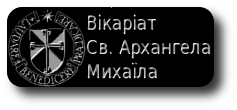
The Virgin Mary and the Catholic Charismatic Renewal
Category:
- Charismatic Renewal
The Virgin Mary, whom a certain Catholicism seems to have put to one side, now "returns" through the ecclesial Movements and new Communities. This was a re-discovery also for the Catholic Charismatic Renewal, a current of grace which spread widely among more than a hundred and twenty million Roman Catholics.
The Charismatic Renewal generally manifests itself in the Church and in the world through its prayer groups which focus on Jesus as Lord and Savior of believers, on praising God, and on the spontaneous use of charisms of the Holy Spirit, such as the speaking in tongues and the spiritual exhortation expressed in prophesying.
Through these charismatic manifestations God re-awakens, in a secularized and dormant world, a new spirit of adoration of his name, which is capable of carrying out new works of salvation for men and women and of preparing his Bride, the Church, for her final encounter with him.
Mary has an essential role in the Charismatic Renewal. In the past thirty five years, the charismatic experience in the Catholic Church has revealed the profoundly "Marian" soul of the Charismatic Renewal.
Our relationship with Mary is direct and we experience her spiritual maternity during our Charismatic prayer meetings. Hers is an evident presence. The invocations to her are simple, at times, even bare, but not void of theological and spiritual depth.
However, Mary is not simply the object of veneration and invocation on the part of Charismatics. Mary is our model in the following aspects: First of all, she is the prototype of the Church owing to her receptivity to the Holy Spirit who forms Christ in the People of God. This doctrine, highlighted by Vatican II, revealed Mary as the mirror of the Church, in relation to her presence at the first outpouring of the Holy Spirit in Jerusalem.
Secondly, Mary is the model of an everlasting Pentecost in the Church. The experience of the outpouring of the Holy Spirit over Mary in Jerusalem was neither the first nor the only one. St. Luke presents the Annunciation as a proto- Pentecost of Mary. Actually, the terms he uses for the two events are identical: at the Annunciation he says: "The Holy Spirit will come upon you" (Lk 1:35), and at Pentecost: the Holy Spirit will come upon you" (Acts 1:8). The similarity then is not a superficial one. Vatican II also underlined this in Lumen Gentium (59) and Ad Gentes (4).
Undoubtedly, the Mother of the Lord lived many other Pentecostal experiences during her earthly life, like that related to us by Luke, when she was in the house of her cousin Elizabeth, where a new outpouring of the Holy Spirit was manifested in such obviously charismatic expressions (Lk 1:39).
Mary is the object, par excellence, of God's favor (Lk 1:28), the first to experience the action of the Spirit (Lk 1:35), the model of all those who long to be "baptized in the Spirit and in fire", as promised by Jesus (Lk 3:16; Acts 2:3).
Mary is the prototype of a continual and never-ending Pentecost in the Church in view of the interiorizing of Christ and of the missionary announcement of the Church to the very ends of the earth (Acts 1:8).
Thirdly, Mary is also the model of charismatic life. Actually, the early Christian community is presented as a charismatic community. It was through the expansion of those gifts, which the letters of Paul call charisms (see 1 Cor 12: 4-11; Eph 4: 11-12), that the coming of the Holy Spirit, the foundation of the Church and the spread of the Gospel were manifested.
In all the narratives linked to the descent of the Holy Spirit over Mary, we see, first of all, an extraordinary outburst of praise and adoration of God, as in the Magnificat (Lk 1:46-56), and the glorification of God in unknown languages, as in the Pentecost of Jerusalem (Acts 2: 4-13).
But another charismatic gift is at the basis of Mary's experience of the Spirit: that of prophecy. All the experiences narrated by St. Luke in his Gospel and in the Acts attach a close relationship between the coming of the Spirit and, for example, the prophetic charism exercised in the song of the Magnificat.
But Mary is not the only one. This charism blossoms forth also in the midst of the people of God, as in Elizabeth who prophesies: "Blessed are you who believed that what was spoken to you by the Lord would be fulfilled" (Lk 1: 43-44); in John the Baptist, who rejoices in Elizabeth's womb and which is, according to a mystical tradition of the Church, the first charismatic and prophetic impetus; in Zachariah, with the canticle of the Benedictus, parallel to the Magnificat.
While the Catholic Charismatic Renewal recuperates some aspects of the Virgin Mary as the pneumatic and charismatic model, as prophetess and speaker of tongues, what is important in all this is that Mary is for the Church the most authentic model of Christian life and of its evangelizing mission. It is her "best part" which no one can take from her; on the contrary, we must highlight it again.
http://www.catholicfraternity.net/images/RelazioneFiuggi%2003.pdf














